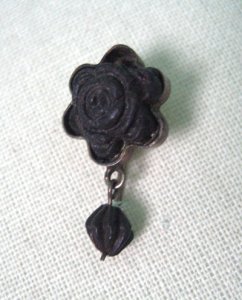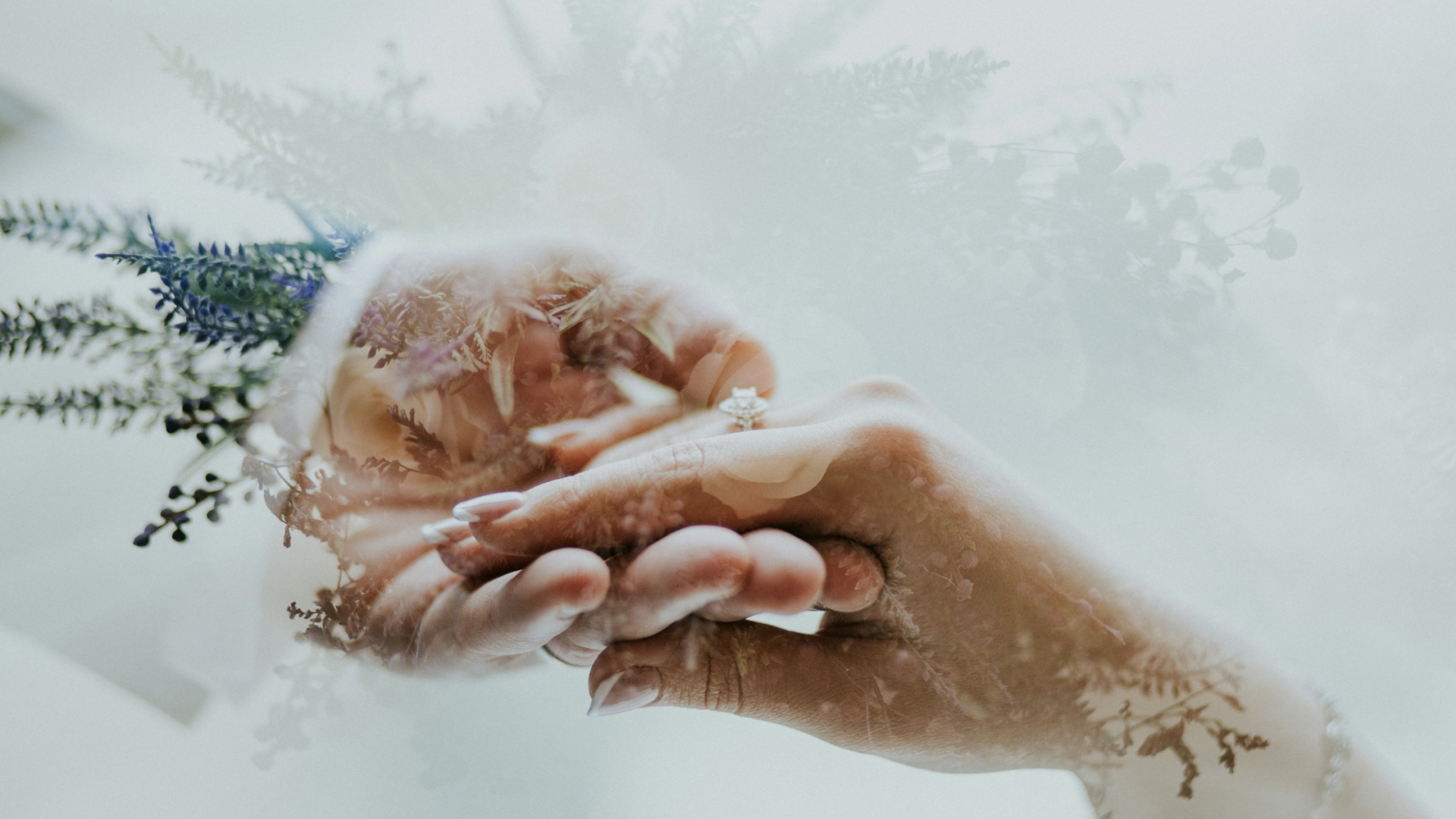LGK
Ideal_Rock
- Joined
- Nov 27, 2007
- Messages
- 2,975



History of Mourning Jewelry
Public mourning has been a tradition since the 1600s, beginning with the execution of Charles I of England. It was most widespread in the 1800s, which can be traced to two catalysts; the American Civil War and primarily to Albert, husband to Queen Victoria, dying of typhoid in 1861. Queen Victoria plunged into mourning for the rest of her life, and it became fashion for the rest of England and America to mourn elaborately and publicly as well. By the Victorian era, customs for mourning were highly stylized and restrictive in both England and America.
In America, there were huge numbers of casualties of the Civil War, which left few families untouched. Indeed, many soldiers would clip a lock of hair and leave it with loved ones before leaving for war, to create mourning hair jewelry out of in the event of their deaths. Also unfortunately common in the 1800s was childhood death- historians estimate the childhood mortality rate at anything from one fifth to one third of all children. Indeed, it was considered something that parents expected to endure, and parents were advised not to become too attached to infants. Mourning jewelry made from the child’s hair, or in the latter part of the century, a photograph of the dead body, were treasured mementos for parents.
It was more difficult to ignore death; indeed, to make it easier to cope with the ubiquity of death and especially the loss of children, death and dying was romanticized to a large extent (very different than the pragmatic views of death in medieval times). People very firmly believed in life after death, and that they would be reunited with lost loved ones in paradise; treasured reminders of loved ones were very important. Hence, mourning jewelry.
Very early examples of mourning jewelry, from the 1500s, were in the form of the Death’s head, or skull and/or crossbones. It was not unusual to find babies’ silver spoons of that time period decorated with death’s heads. It was considered a memento mori, or a reminder of the inescapable fact that we will all die, as well as an allusion to the medieval saying “The first cry of the newly born child is its first step towards the grave”.
The death of King Charles I in 1649 was marked with memorial rings, depicting the King wearing a crown; the inscription was “Vanitas” on one side, and “Gloria” on the reverse. The death’s head memorial ring was a common item at this time; sometimes they had projections on the ring that served as rosaries as well. Martin Luther wore a gold finger ring with a small enameled death’s head inscribed “Mori saepe cognita” (think often of death). Some death’s head rings were cameos. One example is formed of two skeletons holding a tiny sarcophagus with a lid, which, when opened, shows a smaller skeleton in the interior. While these death’s head rings were not actually mourning the death of a specific person, they were the beginning of what we know as mourning jewelry today.
In America, the earliest piece of mourning jewelry made by an American jeweler, Jeremiah Dummer, is a gold mourning ring made in Boston c.1693. Mourning rings were the earliest form of American jewelry at all- in fact, mourning rings were more common than wedding rings. They were mostly restricted to wealthy colonists.
Black mourning jewelry made of a variety of materials became de rigueur in the Victorian era, after the death of Albert. Jet is one of the most collectable today; jet is a very lightweight, fragile fossilized black wood from a very specific variety of ancient extinct tree; French jet is merely a fancy word for black glass, although the type of French jet glass is actually very hard and not as fragile as most.
Gutta percha is another black material mourning jewelry was made of; it is a man made material, resin and petroleum. Vulcanite, or hardened rubber, is another- it has an almost plastic like consistency. To tell the difference between these substances, gutta percha and vulcanite were always molded, wheareas jet is carved, so examination with a loupe can differentiate between the materials- more detail is visible in molded pieces as well. Also jet never fades, but gutta percha and vulcanite do, usually to a brownish color. French jet is heavier, shinier, and colder to the touch than any of the other black materials. Onyx, a semiprecious black gemstone, is also a favored material for mourning jewelry. Black enamel over metal is another.
Jet mourning jewelry is quite collectable today- jet lent itself to highly intricate carving, but was rather fragile, so there is not an enormous amount that lasted over the years. The pieces most often found are cameos, brooches, necklaces of beads, and earrings.
Deep mourning, or first stage mourning, lasted for two and a half to three years for widows in the Victorian era. This involved layers of black clothing, black veils, yards of crape, and the only jewelry permissible was jet, French jet, gutta percha, and onyx. Second stage mourning involved the removal of the multiple yards of crape, and instead the silk fabric was used as a trim. In third stage mourning, the last 6 months, one could wear shades of purple and other types of jewelry, as well as be seen in public. Coral jewelry was permitted in third stage mourning; coral was also popularized by Queen Victoria.
The memento mori variety of death’s head jewelry was popular from around 1600-1700, and is typically a ring with a black and white enameled skeleton or death’s head, sometimes with a full skeleton set under bezel set glass. However, pendants, slides (worn around the neck with a silk ribbon), and lockets also were typical. The necklaces also featured the same sorts of macabre motifs. The rings were often distributed according to the wishes of the deceased as specified in their will, usually with an inner inscription. Hair was often included in these types of items too, sandwiched between the enamel decoration and the band of the ring, or on one side of a pendant under glass or crystal.
Men had their own forms of mourning jewelry- stick pins, studs, cufflinks, watch chains and fobs in the familiar materials of jet, gutta percha, French jet etc.
Hair work mourning jewelry reached its peak in the Victorian era. Hair jewelry is represented by a loved one's hair, either braided and woven elaborately into a specific item, like a necklace, bracelet or watch fob, or woven and placed under glass in a brooch.
We also see braided hair jewelry in the form of necklaces, earrings, bracelets and watch fobs, woven from the hair of the deceased. Often a watch chain would be woven from the deceased mother's hair and presented by the children to their father on a special occasion. Pearls were often used in mourning jewelry to represent tear drops.
There were several ways hair work was created. Palette worked hair art was created in several ways; the earliest method was to cut or mash up the hair and mix with an adhesive, and then paint it onto a prepared ground, creating detailed mourning scenes. These were painted on brooches for jewelry, often with braided hair under glass on the other side and the painting taking the form of either a mourning scene or a portrait of the deceased. (Of course, these hair paintings were not always jewelry- sometimes they were simply done as framed artwork.) The reversible portrait/hair under glass brooches or pendants were also done with paintings created using paint without hair mixed in, as well.
Another method of palette worked hair art was the cutwork method, whereupon hair was laid upon glue covered paper, then cut out into shapes- this method was most popular c.1835-1850. Extraordinarily elaborate scenes could be made using this method. Flowers were the most common motif created with cutwork. While larger scenes were mostly done with cutwork, designs under glass in brooches or pendants were also made.
Then, the “Prince of Wales” loupe worked feather and curl method came into vogue, created with a curling iron (essentially used exactly like you’d expect, to curl hair). Brooches with Prince of Wales curls under glass were most common in 1860s-1870s.
Table woven hair jewelry was created on a round table, 33” high, which allowed a woman to be seated in a chair and weave the hair on the table in front of her. Before weaving, hair was boiled in soda water for fifteen minutes, then separated into strands of twenty to thirty hairs. Almost all especially intricate braided hair work was woven around molds, carved by local woodworkers. The method of table braiding hair is not dissimilar to making bobbin lace- the hair was created upon a padded form on the table top, with the bundles of strands attached to lead weights. The center of the table had a hole in which the woven hair would be formed, as it was woven hand over hand. After a piece was finished, it was boiled once more in soda water, and any molds were removed.
Both professionals and women at home created hair jewelry and artwork- indeed, it was taught in schools to young girl, especially in Britain and the American South. By the mid 1800s, kits and instructions were sold on the braiding of hair to place in frames for brooches. Plaiting hair became a parlor passtime for ladies.
Victorian and earlier brooches should have a C style clasp, and tube hinge, rather than a modern safety clasp. However, if you find one with a safety clasp, examine it to determine if it is possibly a replacement clasp. Hairwork bracelets typically have a box style clasp. Any hidden compartments for hair make a piece of mourning jewelry even more desirable. Keep in mind that if you see the initials IMO in mourning jewelry, it stands for In Memory Of, not a person’s initials. Often rings would have just IMO inscribed rather than the whole phrase spelled out. Favored floral motifs for mourning pieces were the weeping willow, and forget-me-nots.
Collectors need not fear reproductions ("fakes") of hair jewelry; The time and labor required to produce it does not make it a profitable item for mass production, or even by devoted craftsmen, which assures that if we find it on the market today it is surely not a reproduction such as one might find with other antiques.
There is an excellent book on mourning jewelry; it is Mourning Art & Jewelry by Maureen deLorme. It has beautiful pictures and lots of information.











300x240.png)